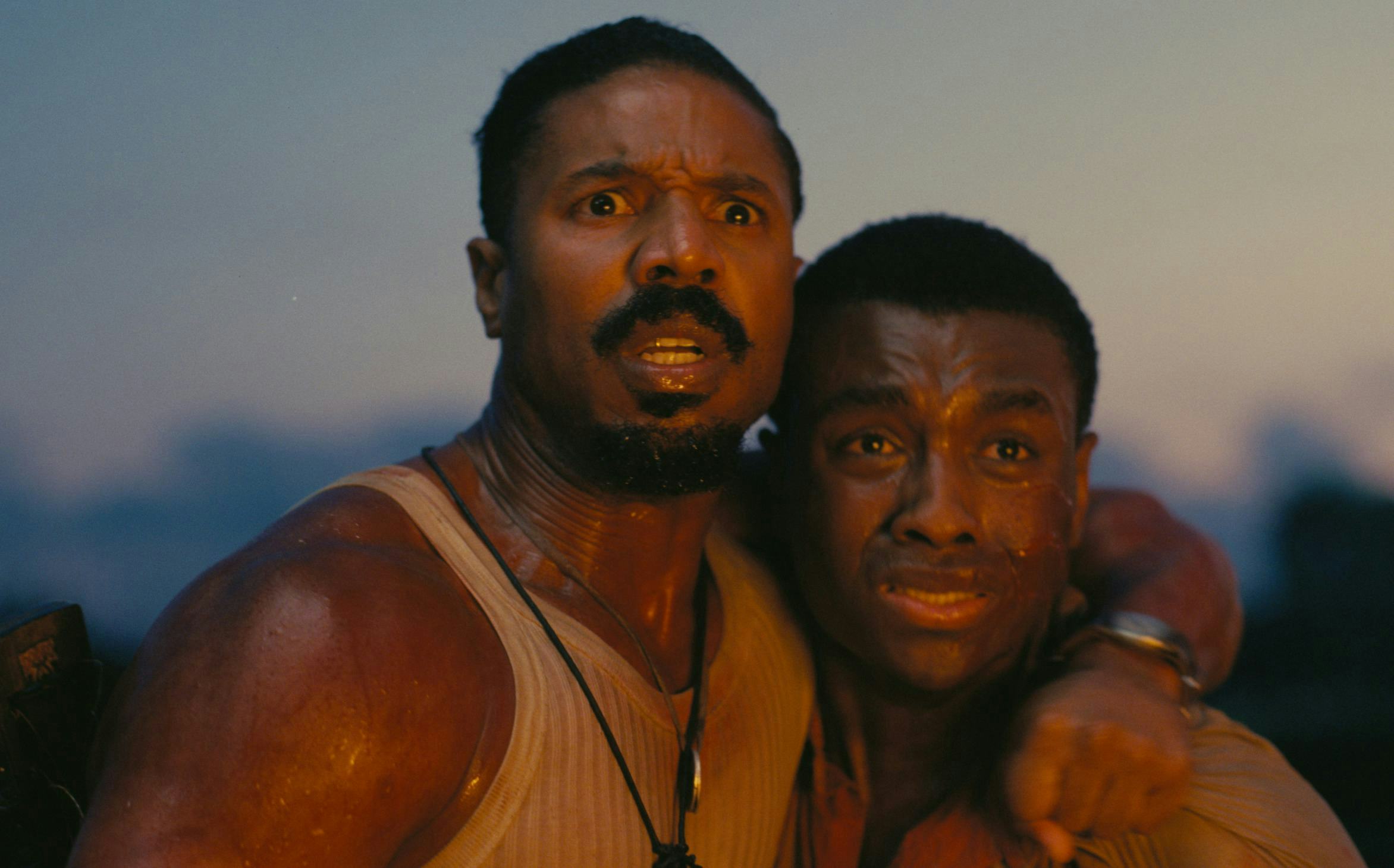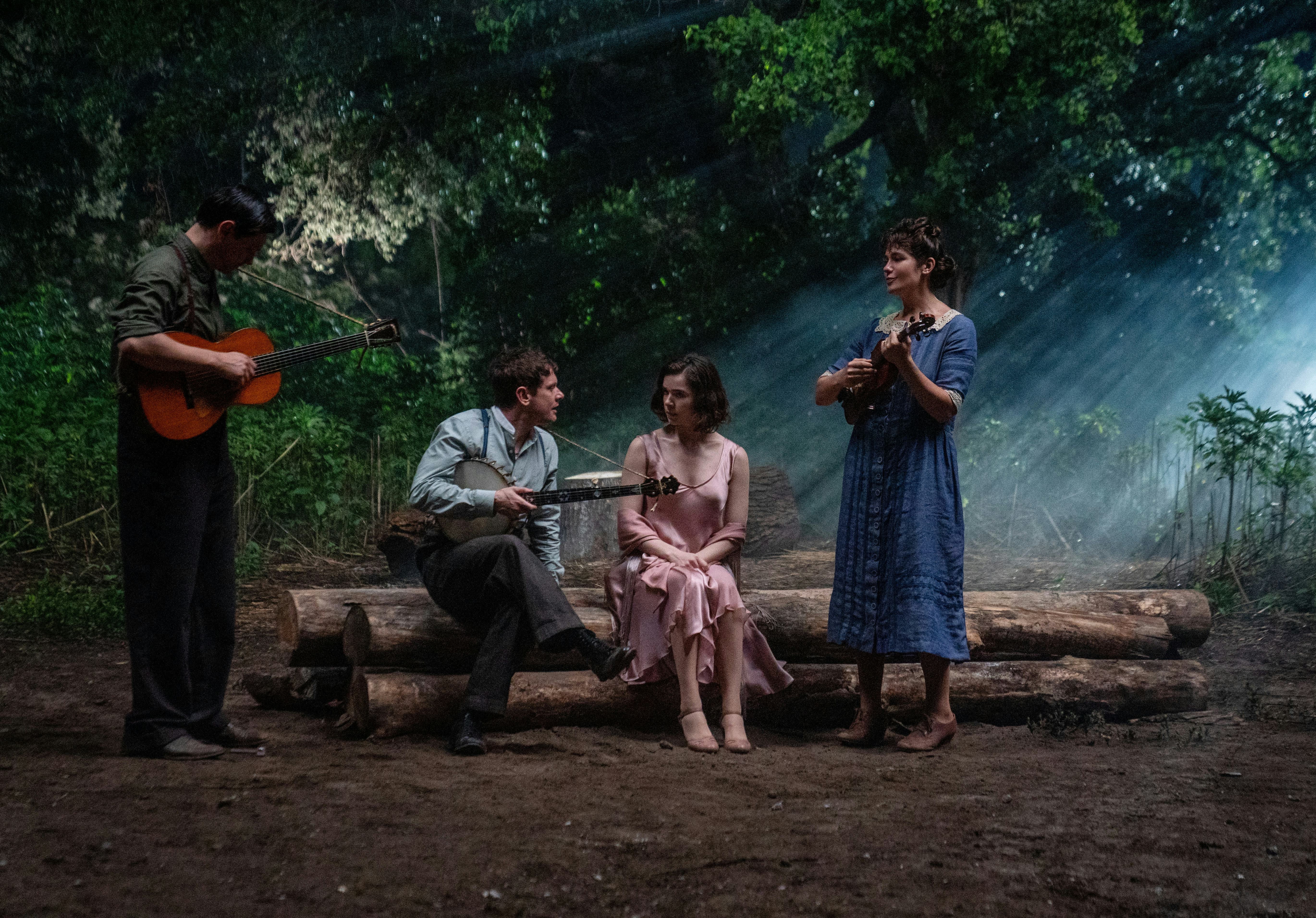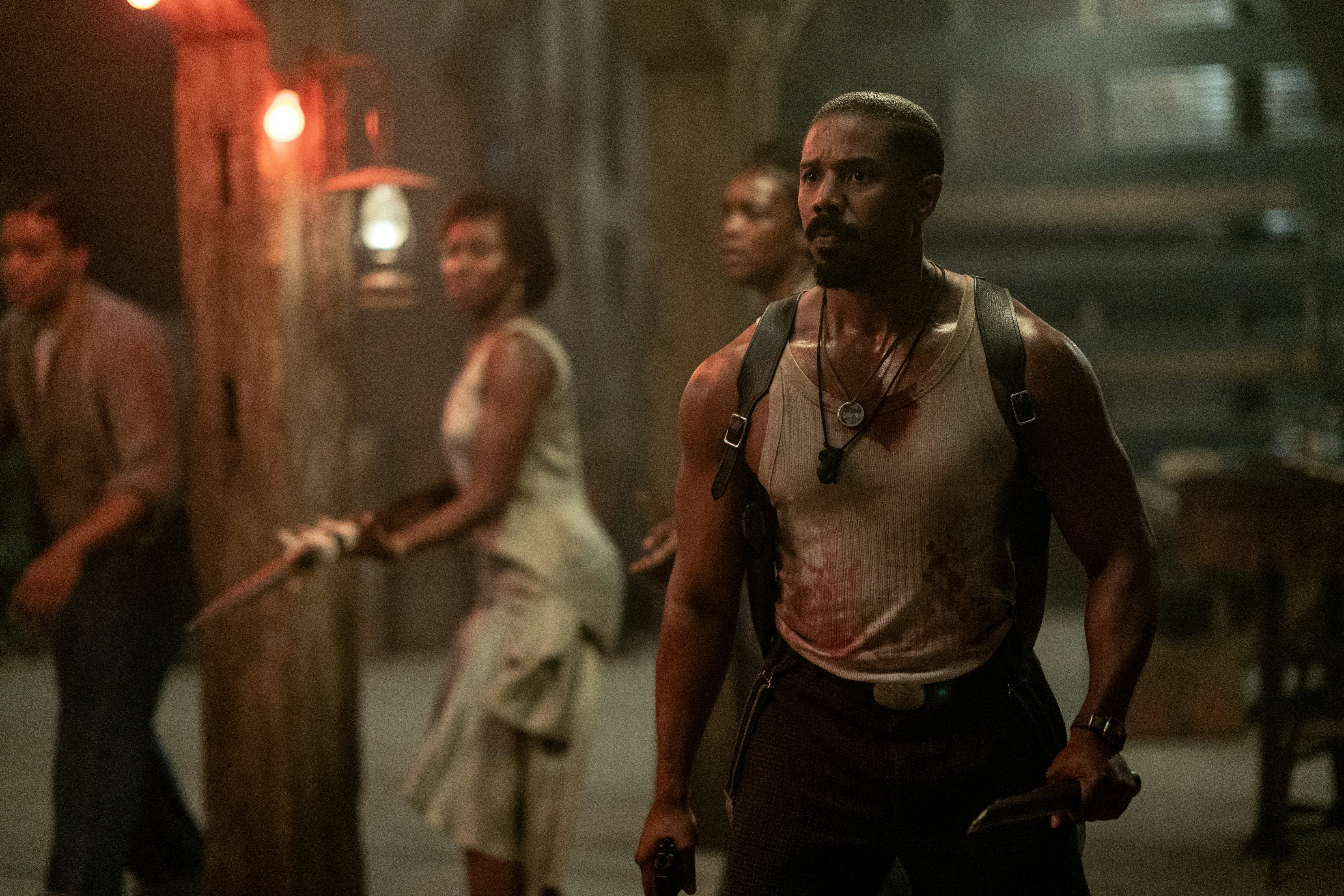
Growing up Black and Christian in the American South, I’ve always had a dysfunctional relationship with music. Like countless religious kids, I recognized gospel as the lifeblood of the church, a conduit for the powers of the Holy Ghost — and rhythm and blues, its secular counterpart, as an invitation for demonic interference. It’s something I was taught to avoid, to shield myself against. The likes of Beyoncé and Britney Spears were totally off-limits in my house: embracing them too readily could have opened the floodgates for evil to overwhelm my spirit... or so my parents had told me.
It’s just like this for Sammie (Miles Caton), the reluctant hero of Ryan Coogler’s latest — and perhaps most personal — film, Sinners. Sammie’s the son of a preacher: he’s been brought up to keep God’s word close at hand, to shun anything that would tempt him away from the straight and narrow path. But Sammie might also be something called a griot, a figure that can play music so pure and true that it “pierces the veil,” connecting us to the past and future, to the supernatural. Music is a kind of religion for Sammie, which is why, even after stumbling into church one Sunday morning — broken guitar in hand, maimed and bloody from a wild, traumatic night — he can’t put his instrument down. He’s danced with the devil, his father says; now the devil’s followed him home. But he can’t turn away from the thing that’s become his salvation, even if doing so could exorcise the evil for good.

Sammie’s plight is not one that everyone will immediately understand, but therein lies the beauty of Sinners. Coogler’s narrative doesn’t compromise at any point, but he never forgets to bring us along for the ride. Part-Southern gothic nightmare, part-rock ‘n’ roll opera, Sinners is the rare film that possesses you body and soul. Yes, it’s a vampire film, but it’s also got a lot more on its mind. Coogler uses the conceits of the genre to craft a haunting allegory about the virtues we inherit and the vices that fester in the dark. It fuses African folklore with the visual language of Black horror, crafting a sensory experience as immersive as a baptism in fire.
Before we can wonder too long about the trouble Sammie’s gotten himself into, Sinners turns the clock back 24 hours. His troubles effectively begin when his cousins, Smoke (Michael B. Jordan) and Stack (also Jordan), return home after seven years in gangland Chicago, bringing the promise of riches and fame along with them. The “Smokestack Twins” racked up quite a reputation in their youth, and it’s only grown when they cross the Mississippi border with a bag full of cash and a truckload of booze and ammunition. They’ve bought an old sawmill on the outskirts of their hometown, and by the time night falls, they’ve turned the gutted warehouse into a glittering juke joint. To support them on their opening night, they round up a ragtag group from their past: Smoke’s old flame and Hoodoo healer Annie (Wunmi Mosaku), sharecropper-turned-bouncer Cornbread (Omar Miller), Chinese-American grocers Grace (Li Jun Li) and Bo (Yao), and legendary blues player Delta Slim (Delroy Lindo).
Sammie, of course, comes along for the ride too. Smoke and Stack gifted him his first guitar when he was just a boy, setting him on the path he walks now. His crooning draws half the town to the makeshift blues club, including Mary (Hailee Steinfeld), Stack’s childhood sweetheart, and Remmick (Jack O’Connell), a banjo-strumming stranger especially keen for an invitation inside.

If Sinners had one flaw, it could be in its pacing. Coogler takes his time building out the world of Clarksdale, Mississippi, poring over the sights and sounds of the Jim Crow South. It’s most acutely felt in the film’s indulgent first act, but it crucially clues us in to who the Smokestack twins are, where they come from, and what they’re fighting for — and the same goes for the people who’ll eventually face the supernatural alongside them. Sinners makes it worth our while with breathtaking production design and sound: Composer Ludwig Göransson provides a sonic backdrop unlike any other, while Coogler uses every sensory tool at his disposal, crafting pockets of horror in broad daylight. At one point, Lindo’s Slim describes a lynching he witnessed as a younger man. We hear the memory rather than see it, with harrowing effects playing over his words like a radio drama. It’s a gutsy use of sound, and it’s right at home alongside Coogler’s other creative swings. If the build-up to the twins’ opening night is a slow-simmering pot, the filmmaker ensures you’ll want to see it boil over — especially once Remmick and his crew come knocking.
For those well-versed in their vampire lore, it’s not too difficult to guess what Remmick really is, or why he’s so adamant about being invited in. It doesn’t take long for his twee “peace and fellowship” act to sour either, giving way to a night of bared fangs and bloodshed. Sinners’ creature designs are positively mesmerizing, and Coogler’s script pulls off a tricky balancing act with its supernatural themes, honoring the classic rules of engagement while adding his own lore to the mix. Remmick’s fascination with Sammie is by no means a coincidence: it invokes the age-old struggle between colonizer and colonized; those who wring out their souls to create art and those who swoop in to appropriate the finished product. Remmick offers eternal life in exchange for Sammie’s songs and stories, presenting ascension as the healing balm that can erase centuries of ancestral trauma — even unite the world. All it’ll cost is his soul... and the souls of anyone who gets in Remmick’s way.

In Sinners, the “devil” at the door is both metaphorical and literal, and Coogler finds myriad applications for the threats marginalized people have faced through generations. Vampirism is a prism through which the filmmaker can break down colonization, organized religion, the immigrant experience, and the blessings and curses of assimilation. His depiction of the blues is similarly ambitious. In his hands, it’s a bridge to a world unseen — a thesis he explores in a ballsy one-take sequence that reminds us exactly what kind of director he is (as if we could forget).
Sinners is Coogler utterly unleashed: for the first time in his career, he’s unshackled from the comfort of IP or franchise fare. He uses that freedom to craft a story with no true limits, pouring all of his influences — from Ganja & Hess to Night of the Living Dead — into this hedonistic fever dream. It has no right to work as succinctly as it does, but Coogler has a bit of help both in front of and behind the camera. Cinematographer Autumn Durald Arkapaw creates seamless, hypnotic visuals; legendary costume designer Ruth E. Carter crafts costumes you can practically feel; and a capable cast excavates brilliance from an ironclad script. Jordan is at the top of his game as Smoke and Stack, forging a clear delineation between the tortured twins. Mosaku is a revelation as Annie, while Lindo steals the show as Slim — but Caton’s Sammie is the true one to watch.
By the time the dust settles, it’s easy to see why he can’t let go of his guitar: music may be an unwieldy conduit, but it’s better to dance with the devil you know.







